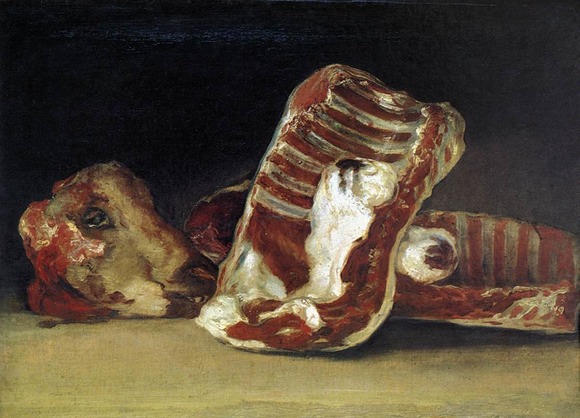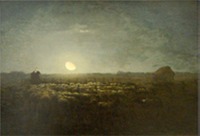goya the counter of the butcher : still life of sheep's ribs and head 1812

Throughout the ages sheep are painted on landscapes. Often you can see a flock of sheep with a shepherd in pastoral landscapes. Sometimes as a part of a group of cattle (sheep, goats, cows) . The Spanisch painter Goya is an important exception. In the beginning of the 19th century he made a very realistic still life of the head and ribs of a slaughtered sheep. The shepherd (or shepherdess) with a flock of sheep was a popular subject for the plein air painters of the School of Barbizon and impressionists ( Millet and Pisarro) Vincent van Gogh was an admirer of Millet and often made drawings and paintings after Millet. Van Gogh's the sheepshearers is a good example. Influenced by the rise of the Hague School landscapes with sheep became very popular in the Netherlands in the second half of the 19th century. Many painters left the expanding towns in search of the purity of the countryside. There they could paint the last pure and untouched landscapes. Laren, de Veluwe en Drente were popular areas. In those thinly populated areas large flocks of sheep played an important role in farming life. This was reflected in the paintings of that time. Paintings with a flock of sheep were in demand. Probably they were a (romantic or nostalgic) expression of the unity of man and nature in a time of modernization and industrialization. Some decades later the heather sheep in Drente became the victim of modernization in agriculture (chemical fertilizer). Their numbers declined rapidly and the old race was on the brink of extinction but luckily survived.


